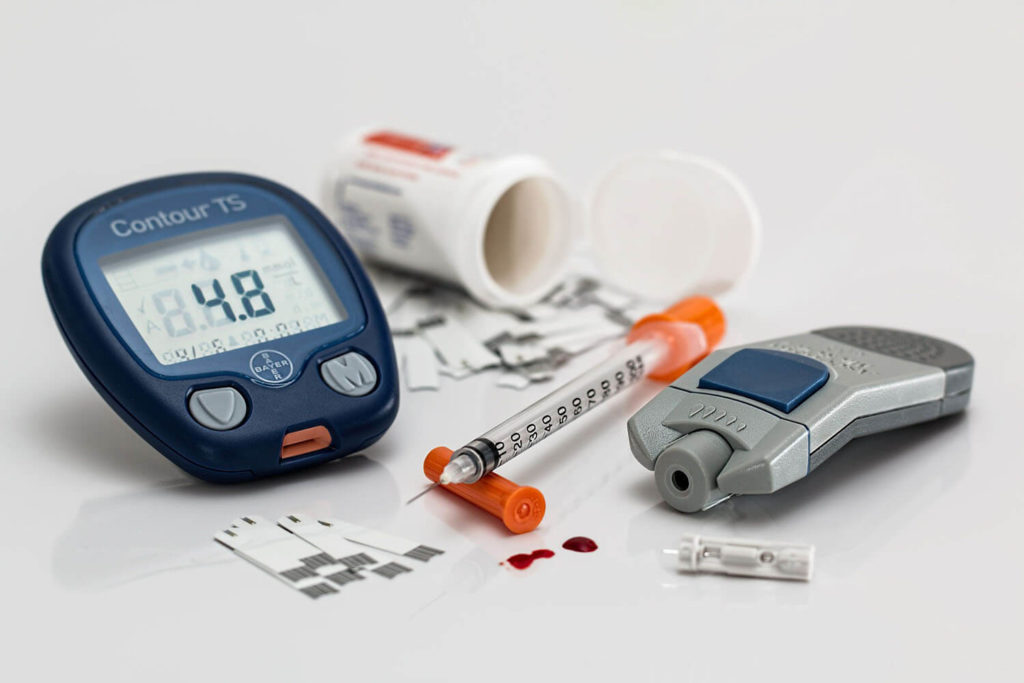Insulin is often linked to diabetes. And not without reason. We speak of type 1 diabetes when the body produces too little or no insulin. Bee type 2 diabetes the body produces enough insulin, but the body cells do not respond sufficiently to the hormone. But what exactly is insulin and why is it so important for our body?
What is insulin?
When we eat our food we ingest carbohydrates. These are converted in the body into glucose, which ends up in the blood. It is also called blood sugar. Blood sugar levels are kept in balance by the hormones insulin and glucagon. Glucose levels are checked using a blood glucose meter.
If the blood sugar level is too low, the body's own hormone glucagon ensures that the stored glucose from the liver enters the bloodstream. This way, the blood sugar level is brought back to normal. In case of a hypo (shortage of blood sugar), you can first try to increase the blood glucose level with food. In case of an extreme hypo, you can choose to inject glucagon.
If the blood sugar level is too high, the balance is restored by insulin. This is a body's own hormone that is produced in the pancreas. The hormone ensures that glucose is brought from the blood to the body cells. There they can be burned by the body. Diabetes patients suffer from a shortage of insulin or the body does not respond properly to insulin, resulting in an increase in glucose levels in the blood. In some cases, insulin is no longer produced at all. Too high glucose levels cause hardening of the blood vessels. This can lead to cardiovascular disease in the long term. With type 1 and sometimes type 2 diabetes, extra insulin needs to be injected into the body. This lowers the blood sugar level to an acceptable level.
How does injecting insulin work?
The insulin is injected into the subcutaneous fatty tissue using an insulin pen or insulin pump, after which it is gradually absorbed by the blood. There are several places on the body where you can inject with the pen needle. The abdomen ensures rapid absorption, while an injection in the buttock or thigh results in slow absorption. There are also different types insulin, ranging from short-acting to long-acting variants.
Short-acting types work 4-5 hours after administration. Long-acting types work for about 24 hours. Based on your health and lifestyle, the doctor determines which type of insulin suits you best and where it can best be injected. For example, the dosage for type 1 diabetes patients depends on blood sugar levels, exercise and, for example, diet.
Insulin injection step-by-step plan
- Wash hands and dry with a clean towel
- Choose the right amount of insulin (determined by the doctor)
- If the insulin looks cloudy, swirl it back and forth about ten times
- Do not shake, as this will create air bubbles
- Attach or screw a new needle onto the insulin pen
- First prime the insulin pen. Turn over 2 units
- Hold the pen with the needle pointing upwards and press the button
- Some insulin will come out of the needle while syringing out
- Now choose the correct number of units to inject
- Spray the insulin onto a dry and clean skin surface
- Grab the pen with one hand, prick the skin perpendicularly and press the button with your thumb
- Leave the needle in the skin for 10 seconds so that all the insulin is absorbed
- If necessary, place a gauze pad over the area if droplets of blood are released
- Replace the cap on the needle and check that all units have been delivered
- Then remove the needle and throw it away in the sharps container
Can't figure it out yourself? Please contact your doctor or diabetes nurse.


don't you sell insulin syringes?
Microfine Insulin syringe 0,5ml U40 + needle 0,30mm (30G) x 8mm
Hi Cath, not yet. But I'm going to inquire about the possibilities.
Hello Cath,
You may have already found the products, but we will of course listen to you.
We now have 5 types of insulin syringes in our range. See: https://diabetesmagazijn.nl/categorie/insulinespuiten/